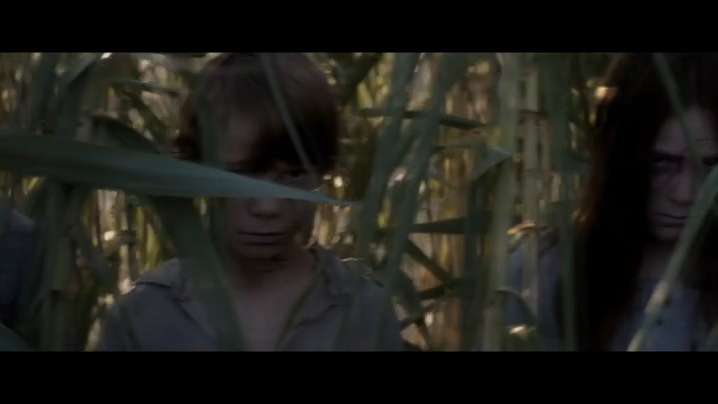Four tips to creating a 'Sinister' villain

Every ghoul’s crazy for a sharp-dressed man — especially when that guy is a pagan deity and noted “eater of children.”
The mouthless malevolence Bughuul haunted Sinister, a micro-budget success story that racked up a $48 million box office in 2012, and he returns for more scares in Sinister 2 (in theaters Friday). Clad in a black suit and lavender shirt, the dark dude keeps himself pretty secret, usually lurking in the shadows as he waits for his creepy kid minions to bring him a new youthful sacrifice. But there’s a lot of thought and detail that goes into creating this Sinister movie villain.
Co-writer/producer Scott Derrickson, director Ciarán Foy (Citadel) and Hollywood super-producer Jason Blum take Paste BN through their process of perfecting Bughuul.
Find a great look
Creating a franchise character was always in the cards for Sinister writers Derrickson and C. Robert Cargill. While they had a story in mind, they didn’t know what Bughuul would look like early in the development of the first movie. Derrickson scoured the photo-sharing site Flickr, and one piece of artwork in particular — labeled “Natalie” — rose to be one of his favorites. “I was like, ‘That is really horrifying,' ” says Derrickson, who gave the art’s creator $500 and a concept-art credit.
Other than giving Bughuul (played by stuntman Nicholas King) a darkly keen fashion sense and greasing up his hair (“Giving him one solid foot in this world,” Derrickson says), they didn’t really tweak the original image that much. For Blum, the episode encapsulates the joy of low-budget filmmaking: “If it was a big Hollywood movie, you would’ve tested Bughuul 100 times and labored over the thought. By the time you actually decided to buy the rights, you just would’ve talked yourself out of it.”
Give him an original mythology
The influences were piecemeal, with bits of pagan myth scattered in his story that comes alive first for best-selling crime writer Ellison Oswalt (Ethan Hawke) in Sinister and then for a good-hearted police deputy (James Ransone) and an embattled single mom (Shannyn Sossamon) in the sequel. What was important for Bughuul's creators was not tying him strongly to anything audiences might have heard of before while also dropping certain nuggets — like his tendency through the ages to express himself through art forms, from old paintings to 16mm amateur films — to keep them intrigued.
“It’s been surprising how many times I’ve been told that after (fans) saw that (first) movie, they went and googled Bughuul to research if it was a real character in history,” Derrickson says. “The fact that people wanted to know tells me we did something right.”
Bughuul’s background is hinted at more in the new film, but his mystery stays intact mainly because he’s almost never seen except for a couple of short flashes. That’s definitely on purpose, Foy says. “The more people are given a chance to look at anything and dissect it, something happens to your sense of fear. Knowledge suspends fear and the more you can’t quite make something out, the more powerful and scary it is.”
Use him sparingly
Instead, Foy focused on making Bughuul seem in the picture even when not. For example, his eyes look like turned triangles, and Foy’s team used that shape in the foreboding basement of the central farmhouse in Sinister 2, as well as in a church where something seriously bad once happened. “The characters are always within his eye,” the director says. “It has a subconscious effect on the audience where Bughuul still feels present.”
Throw in some terrifying children
Creepy kids are almost a requisite for great horror, according to Derrickson (see: The Exorcist, The Omen). When he and Blum were trying to sell the original Sinister, though, every major studio passed because “it was too dark and too taboo and too transgressive to see children be both the victims and perpetrators of such evil.” The home-movie “kill films” that Ellison finds in the first film, featuring possessed youngsters doing horrible things to their families in the name of Bughuul, led to different and scarier uses of the plot device in the sequel, where a group of ghostly tykes are trying to corrupt a young boy (Robert Daniel Sloan).
The susceptibility of children to become agents or victims of something sadistic is definitely a disturbing thought, Derrickson says.
"Good horror taps into something like that," he says. "It’s part of what makes audiences scared and uncomfortable."